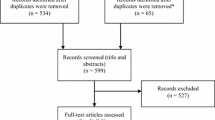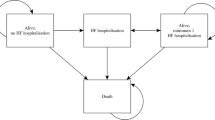Summary
Background
Cardiac implantable electronic devices (CIED) have become an indispensable part in everyday clinical practice in cardiology. The indications for CIED implantation are based on the guidelines of the European Heart Rhythm Association (EHRA). Nevertheless, numbers of CIED implantations in Europe are subject to considerable differences. We hypothesized that reimbursements linked to the respective health systems may influence implantation behavior.
Methods
Based on the EHRA White Book 2017, CIED implantation data as well as socioeconomic key figures were collected, in particular gross domestic product (GDP) and share of gross domestic product spent on healthcare.
Implantation numbers for pacemakers, implantable cardioverter defibrillators and cardiac resynchronization treatment as well as all in total were assessed, compared with the health care expenditures and visualized using heat maps.
Results
Total implantation numbers per 100,000 inhabitants varied from 196.53 (Germany) to 2.81 (Kosovo). Higher implantation numbers correlated moderately with a higher GDP (r = 0.456, p 0.002) and higher health expenditure (r = 0.586, p < 0.001). The annual financial resources per inhabitant were also subject to fluctuations ranging from 9476 $ (Switzerland) to 140 $ (Ukraine); however, there were countries with high financial means, such as Switzerland or Scandinavian countries, which showed significantly lower implantation rates.
Conclusion
There were considerable differences in CIED implantations in Europe. These seem to be explained in part by socioeconomic disparities within Europe. Also, a potential influence by the respective remuneration system is likely.





Similar content being viewed by others
References
Cabanas-Grandio P, et al. Quality of life of patients undergoing conventional vs leadless pacemaker implantation: a multicenter observational study. J Cardiovasc Electrophysiol. 2020;31(1):330–6.
Cleland JG, et al. The effect of cardiac resynchronization on morbidity and mortality in heart failure. N Engl J Med. 2005;352(15):1539–49.
Edhag O, Swahn A. Prognosis of patients with complete heart block or arrhythmic syncope who were not treated with artificial pacemakers. A long-term follow-up study of 101 patients. Acta Med Scand. 1976;200(6):457–63.
Johansson BW. Complete heart block. A clinical, hemodynamic and pharmacological study in patients with and without an artificial pacemaker. Acta Med Scand Suppl. 1966;451:1–127.
Moss AJ, et al. Improved survival with an implanted defibrillator in patients with coronary disease at high risk for ventricular arrhythmia. Multicenter Automatic Defibrillator Implantation Trial Investigators. N Engl J Med. 1996;335(26):1933–40.
Tomzik J, et al. Quality of life in patients with an Implantable cardioverter defibrillator: a systematic review. Front Cardiovasc Med. 2015;2:34.
Barbar T, et al. Strategies to prevent cardiac Implantable electronic device infection. J Innov Card Rhythm Manag. 2020;11(1):3949–56.
Blomström-Lundqvist, C., et al., European Heart Rhythm Association (EHRA) international consensus document on how to prevent, diagnose, and treat cardiac implantable electronic device infections-endorsed by the Heart Rhythm Society (HRS), the Asia Pacific Heart Rhythm Society (APHRS), the Latin American Heart Rhythm Society (LAHRS), International Society for Cardiovascular Infectious Diseases (ISCVID) and the European Society of Clinical Microbiology and Infectious Diseases (ESCMID) in collaboration with the European Association for Cardio-Thoracic Surgery (EACTS). Europace, 2020. 22(4): p. 515–549.
Kirkfeldt RE, et al. Risk factors for lead complications in cardiac pacing: a population-based cohort study of 28,860 Danish patients. Heart Rhythm. 2011;8(10):1622–8.
Udo EO, et al. Incidence and predictors of short- and long-term complications in pacemaker therapy: the FOLLOWPACE study. Heart Rhythm. 2012;9(5):728–35.
Goette A, Sommer P. Infections of cardiac implantable electronic devices: still a cause of high mortality. Europace. 2021;23(Supplement_4):iv1–iv2.
Brignole M, et al. 2013 ESC Guidelines on cardiac pacing and cardiac resynchronization therapy: the Task Force on cardiac pacing and resynchronization therapy of the European Society of Cardiology (ESC). Developed in collaboration with the European Heart Rhythm Association (EHRA). Eur Heart J. 2013;34(29):2281–329.
Kusumoto FM, et al. 2018 ACC/AHA/HRS Guideline on the Evaluation and Management of Patients With Bradycardia and Cardiac Conduction Delay. J Am Coll Cardiol. 2019;74(7):e51–e156.
Hindricks G, Camm J, Merkely B, Raatikainen P, Arnar DO. The EHRA white book 2017 the current status of cardiac electrophysiology in ESC member countries. 2017. https://www.escardio.org/Sub-specialty-communities/European-Heart-Rhythm-Association-(EHRA)/Research-and-Publications/The-EHRA-White-Books. Accessed 17 June 2021.
Thomson S, et al. Private health insurance: history, politics and performance. Cambridge: University Press; 2020.
Mossialos E, Thomson SMS. Voluntary health insurance in the European Union: a critical assessment. Int J Health Serv. 2002;32(1):19–88.
Boriani G, et al. Device therapy and hospital reimbursement practices across European countries: a heterogeneous scenario. Europace. 2011;13(suppl_2):ii59–ii65.
Raatikainen MJP, et al. A decade of information on the use of cardiac Implantable electronic devices and Interventional electrophysiological procedures in the European society of cardiology countries: 2017 report from the European heart rhythm association. Europace. 2017;19(suppl_2):ii1–ii90.
Dissmann W, de Ridder M. The soft science of German cardiology. Lancet. 2002;359(9322):2027–9.
Wengler A, Nimptsch U, Mansky T. Hip and knee replacement in Germany and the USA: analysis of individual inpatient data from German and US hospitals for the years 2005 to 2011. Dtsch Arztebl Int. 2014;111(23–24):407–16.
Geissler A, et al. Germany: understanding G‑DRGs. Diagnosis-related groups in Europe: moving towards transparency, efficiency and quality in hospitals. 2011. pp. 243–72.
Bank TW. GDP per capita (current US$)—World Bank national accounts data, and OECD National Accounts data files. 2021. https://data.worldbank.org/indicator/NY.GDP.PCAP.CD?most_recent_value_desc=true. Accessed 30 July 2021.
Kutz A, et al. Association of the Swiss diagnosis-related group reimbursement system with length of stay, mortality, and readmission rates in hospitalized adult patients. JAMA Netw Open. 2019;2(2):e188332.
Flat rate per case catalogue Swiss DRG Version 10.0, Billing Version (2021/2021). 2021. https://www.swissdrg.org/de/akutsomatik/swissdrg-system-1002021/english-version. Accesssed 30 July 2021.
Gadler F, Valzania C, Linde C. Current use of implantable electrical devices in Sweden: data from the Swedish pacemaker and implantable cardioverter-defibrillator registry. Europace. 2015;17(1):69–77.
Markewitz A. Jahresbericht 2013 des Deutschen Herzschrittmacher- und Defibrillatorregisters, Teil 2 – Implantierbare Cardioverter-Defibrillatoren. Herzschr Elektrophys. 2015;26(4):399–423.
Teimourizad A, et al. Cost-effectiveness of cardiac resynchronization therapy plus an implantable cardioverter-defibrillator in patients with heart failure: a systematic review. Cost Eff Resour Alloc. 2021;19(1):31.
Crespo C, et al. Optimisation of cardiac resynchronisation therapy device selection guided by cardiac magnetic resonance imaging: Cost-effectiveness analysis. Eur J Prev Cardiol. 2020;27(6):622–32.
Glikson M, et al. 2021 ESC Guidelines on cardiac pacing and cardiac resynchronization therapy: Developed by the Task Force on cardiac pacing and cardiac resynchronization therapy of the European Society of Cardiology (ESC) With the special contribution of the European Heart Rhythm Association (EHRA). Rev Esp Cardiol (engl Ed). 2022;75(5):430.
Schnell-Inderst P, et al. Health technology assessment of medical devices: What is different? An overview of three European projects. Z Evid Fortbild Qual Gesundhwes. 2015;109(4–5):309–18.
Acknowledgements
The data presented in this study was partly used in the preparation of a thesis for the degree program “Health Sciences, Leadership” at Paracelsus Medical Private University Salzburg, Austria, written in German by the corresponding author C. E.
Funding
This research received no specific funding from public, commercial or non-profit institutions.
Author information
Authors and Affiliations
Contributions
M. B. acquired and interpreted data, performed statistic calculations and contributed in manuscript preparation. D. R. acquired study data, performed statistic calculations and revised the manuscript. M. L., K. K,. C. G., P. J. and C. B. revised the article critically for the content. C. E. planned and coordinated the study, acquired, analyzed and interpreted data, prepared figures, contributed in manuscript preparation and provided final approval of the article. All authors read and approved the final version of the manuscript.
Corresponding author
Ethics declarations
Conflict of interest
M. Bannehr, D. Reiners, M. Lichtenauer, K. Kopp, P. Jirak, C. Georgi, C. Butter, and C. Edlinger declare that they have no competing interests.
Additional information
Publisher’s Note
Springer Nature remains neutral with regard to jurisdictional claims in published maps and institutional affiliations.
Rights and permissions
About this article
Cite this article
Bannehr, M., Reiners, D., Lichtenauer, M. et al. Impact of socioeconomic aspects on cardiac implantable electronic device treatment and application of the EHRA guidelines. Wien Klin Wochenschr 134, 646–653 (2022). https://doi.org/10.1007/s00508-022-02056-5
Received:
Accepted:
Published:
Issue Date:
DOI: https://doi.org/10.1007/s00508-022-02056-5




